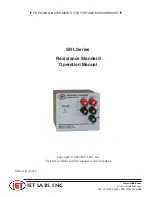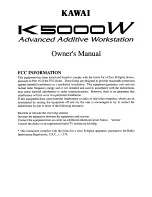
50
ENGLISH
6.2.2 MATERIAL UNLOADING
DANGER
Avoid dumping the load onto slopes, because the
shifting of the same one may cause instability and
overturn the machine.
In order to correctly unload the material, operate in
the following way (the numbers quoted in the text
refer to Fig. 13):
- Drive the machine where you should unload the
material.
- Make sure that the loading bucket is completely
lifted. In order to achieve this, operate the lever (6)
by pulling it backward, until the two cylinders (3)
reach the end of stroke.
- Release0dhe lever (6) and push the distributor le-
ver (5) forward. At this point the dumper lifts and
unloads the material.
- Pull the distributor lever backward (5). Now the dumper
lowers and goes back to the loading position.
DANGER
It is absolutely forbidden to leave the machine with
the loading bucket or dumper in the lifted position,
because they may accidentally lower and cause
damages to persons or things .
6.3 DISASSEMBLY OF THE BUCKET
In case of hindrance or other problems, the bucket
may be easily disassembled.
In order to disassemble it, do as follows:
DANGER
For the disassemble, arrange suitable lifting equip-
ment, such as cranes, hoists, etc….
Two persons are required for this operation.
WARNING
During the maintenance and service operations, it
is compulsory to use protective garments, cut proof
gloves, non-slip and anti-crash shoes.
- Start the engine.
- Lift the bucket and bring it above the dumper.
- Shut the engine off.
- Fasten tightly the bucket with ropes, in order to
prevent it from moving, as shown in figure 14.31
- Unscrew the nuts (1 Fig. 14).
- Remove the bolts (3 Fig. 14).
- Lift the bucket slightly and place it in a safe place.
WARNING
In order to assemble the bucket, perform the re-
verse procedures.
Two persons are required for this operation.
6.4 CONCRETE MIXER
This equipment is designed to prepare bitumen in
building or private environment.
It is made up of a concrete mixer to mix the product
(4 Fig. 15) and it rotates thanks to a hydraulic engine
assembled on the dumping frame. All motion is per-
formed by a three-way hydraulic distributor with only
2 levers 7 Fig. 15).
6.4.1 USE OF THE CONCRETE MIXER
To use the concrete mixer correctly, operate in the
following way, after driving the machine to the most
comfortable area and to a flat ground:
- Put inside the concrete mixer water in a quantity
proportional to the bitumen to be prepared.
- Rotate the concrete mixer by pushing the lever for-
ward (5 Fig. 15); adjust the rotation speed at about
20-25 rpm by means of the knob (8) of the flow
regulator.
WARNING
By rotating the knob clockwise, the speed de-
creases, while by rotating it anticlockwise, the
speed increases.
- By means of a shovel, insert the material to be
mixed into the concrete mixer manually (first the
sand or gravel and then the cement) in the required
quantity and as much as not to make it come out
of the tank.
- Let the concrete mixer rotate until the product is
completely mixed.
- At this point, reduce the rotation speed of the con-
crete mixer and transfer the machine to the area
where you want to unload the ready bitumen.
Note: With a high rotation of the concrete mixer,
the dumping cylinder may not work.
Summary of Contents for F 400
Page 4: ...4 1700 900 700 Fig 2 A Fig 3 5 4 1 2 6 3 7 ...
Page 5: ...5 Fig 4 1 2 3 A B 6 4 5 1 4 2 Fig 5 Fig 6 1 3 5 ...
Page 6: ...6 2 A B 1 Fig 6 a Fig 7 AR AM P K AT R F1b V L G1 G2 P5 P2 P3 P4 Q P1 F GR ...
Page 9: ...9 Fig 13 1 6 4 3 2 2 5 Fig 12 F D1 M S A R RT V ...
Page 10: ...10 3 1 1 Fig 14 ...
Page 11: ...11 1 4 2 3 9 7 6 5 8 Fig 15 7 6 5 8 11 10 ...
Page 12: ...12 Fig 17 1 2 4 6 7 5 3 Fig 16 ...
Page 13: ...13 1 4 3 5 2 Fig 18 Fig 19 A A 9 10 9 6 5 2 2 1 7 3 4 8 13 11 12 F ...
















































